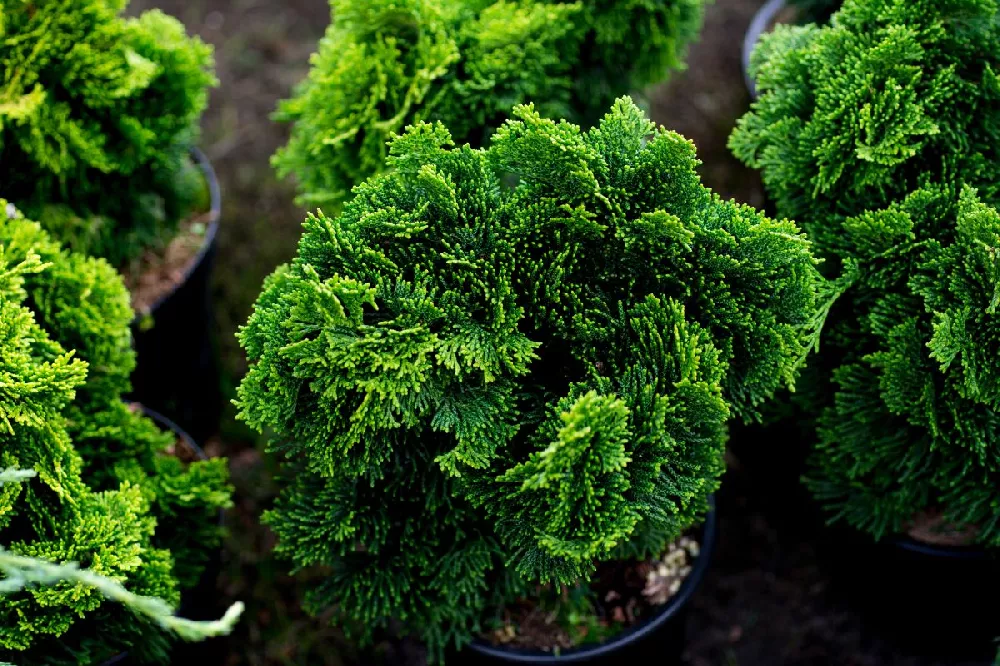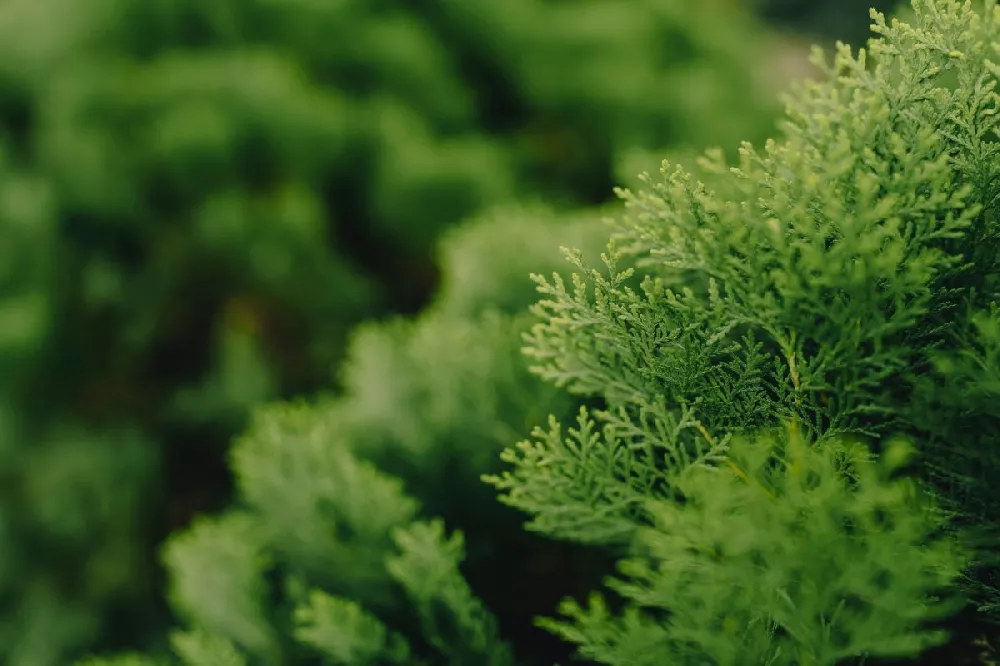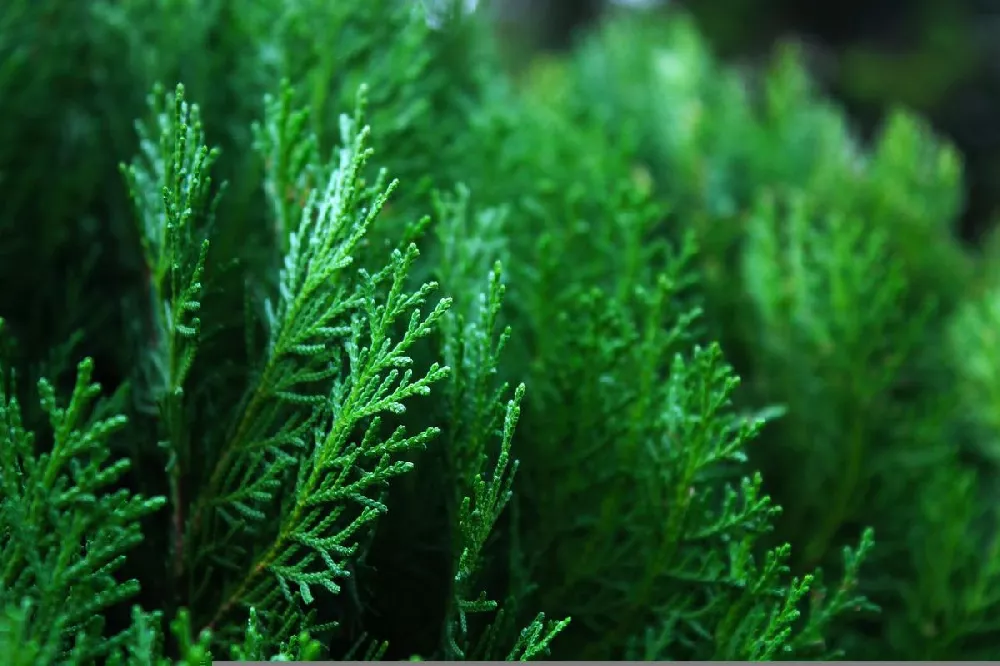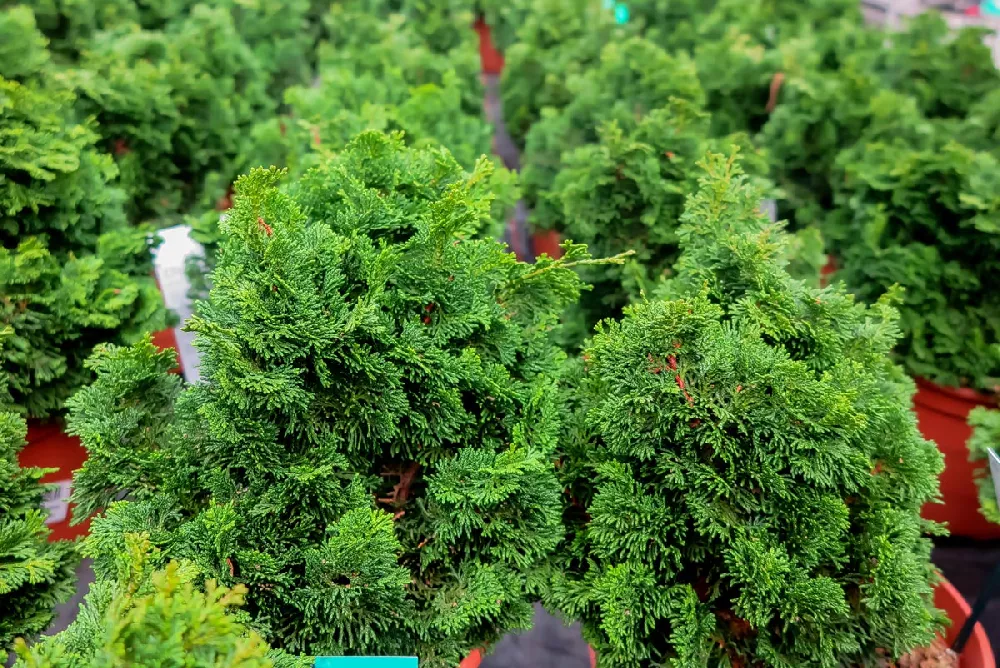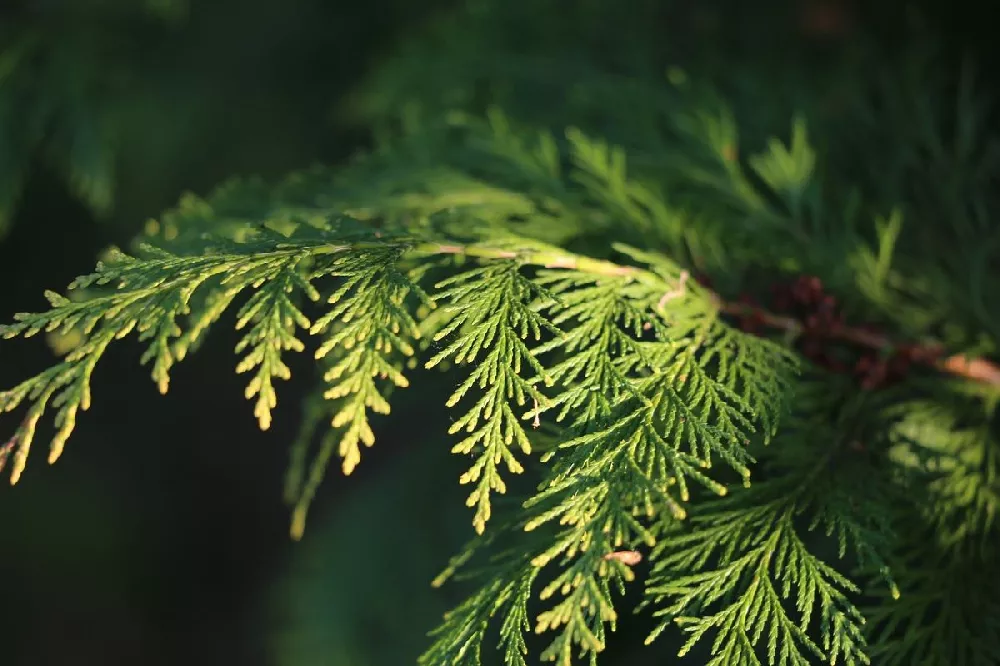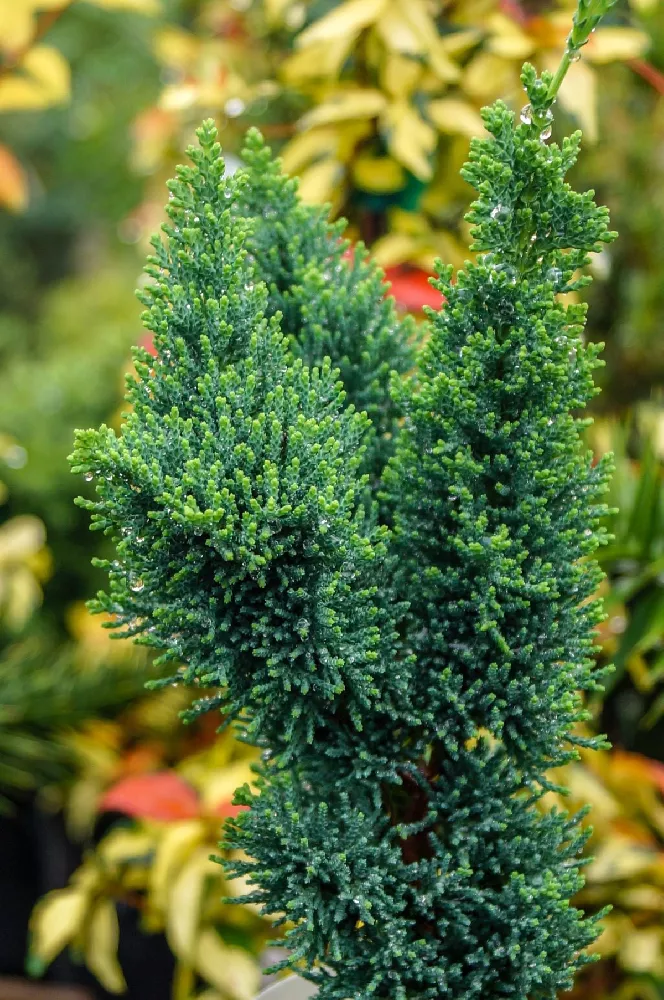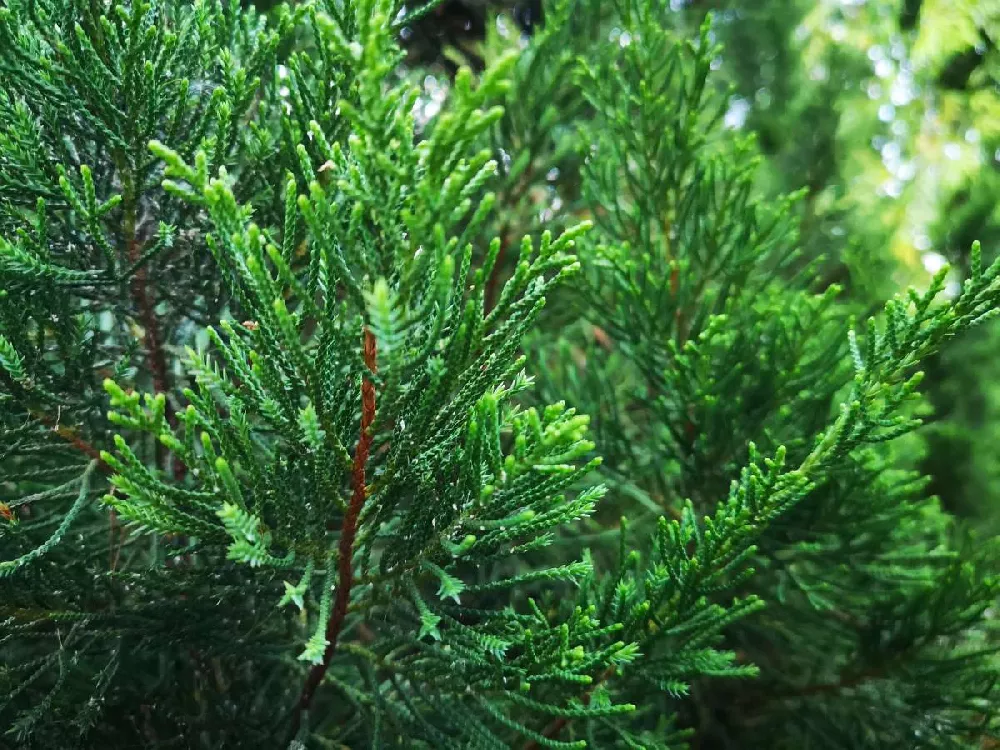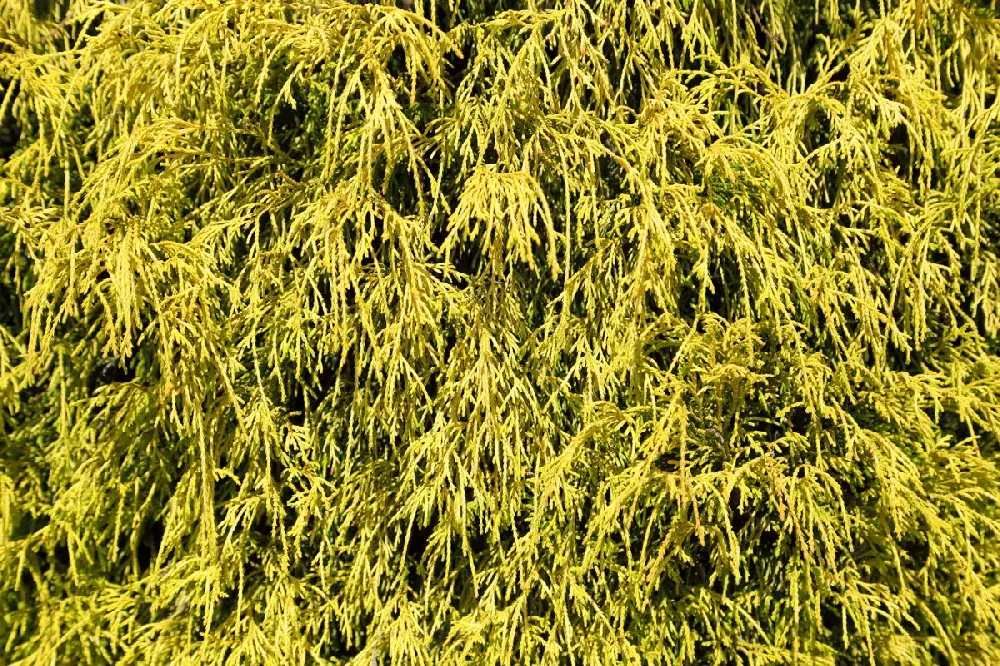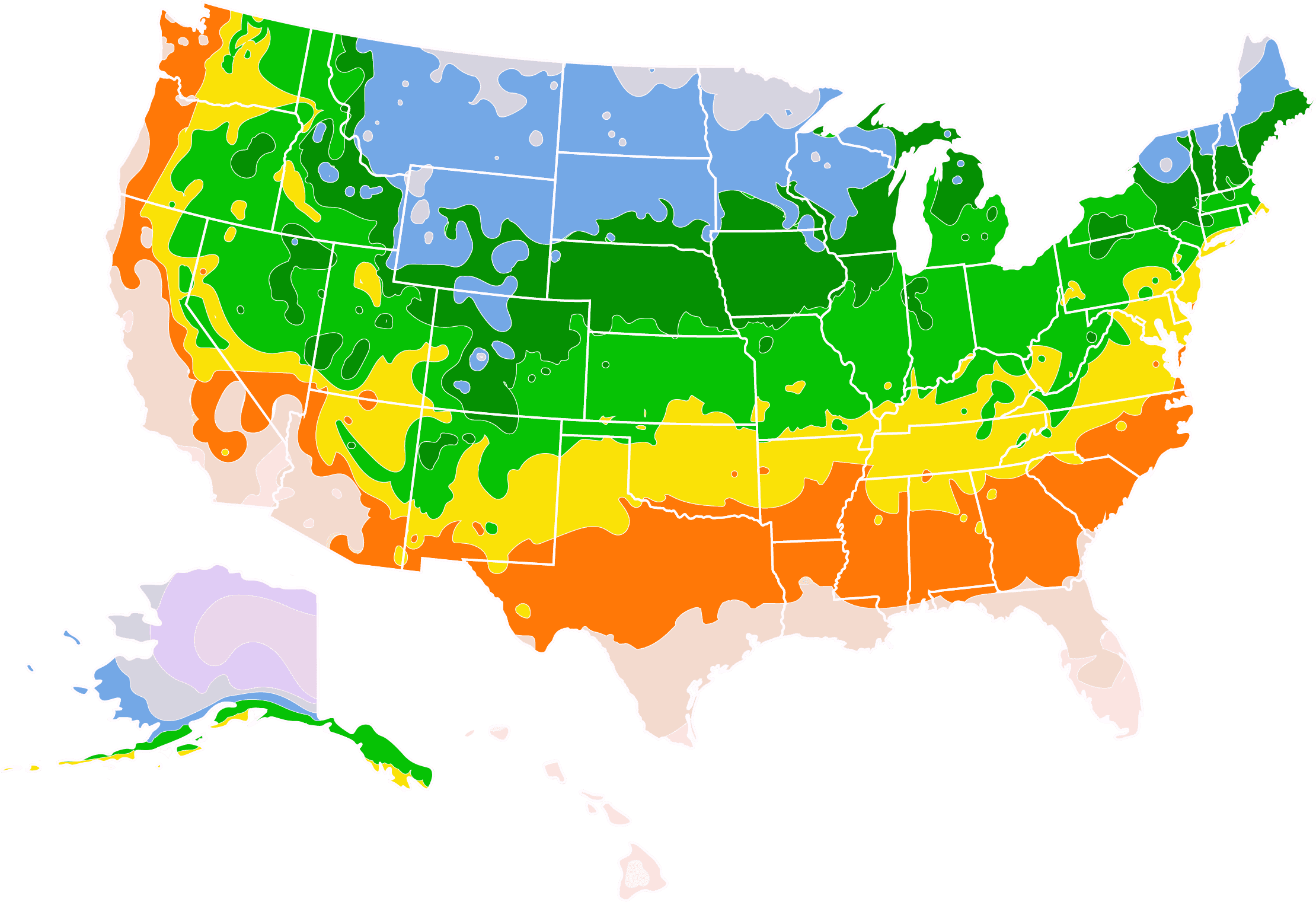- Home >
- Ornamental Plants >
- Dwarf Hinoki Cypress
Dwarf Hinoki Cypress for Sale - Buying & Growing Guide
If you are looking for a manageable plant that will add consistent evergreen foliage to your garden, then look no further than the dwarf hinoki cypress. This cultivar, known as Chamaecyparis obtusa 'Nana Gracilis,' creates a lovely textural effect via its foliage no matter where you choose to plant it. The dwarf hinoki cypress's growth rate is slow, and, as its name implies, its mature size is small — about 6 feet in height. All those traits make for a lovely plant that poses no threat of overcrowding your other favorite garden plants.
- The dwarf hinoki cypress develops into a consistent pyramidal form.
- It has lustrous green foliage with an interesting texture.
- This cypress has slow growth and a small overall size.
Enter your zip code to find nearby stores that may carry this plant.
Plant Care
Sunlight

The dwarf hinoki cypress prefers full sunlight but will likely survive in partial shade as well.
Watering
When young, water once per week. When mature, water when the first 3 inches of soil become dry.
Fertilizing

This tree typically grows well without the need for fertilization.
Planting and Care
Planting instructions
The best growing location for a dwarf hinoki cypress tree is one that receives full sunlight and is relatively humid. The dwarf hinoki cypress also appreciates soils that remain consistently moist but also have good drainage. That soil should also have a neutral pH or one that is slightly acidic. When planting this shrub, give it about 3 feet of space in all directions, as that will be plenty of room to accommodate this plant’s small mature size.
Watering and nutrients
When your dwarf hinoki cypress is still young, you should plan to give it water once per week throughout the warmer parts of the growing season. Established dwarf hinoki cypresses often show an impressive ability to survive drought. However, you should provide water during extremely hot weather or prolonged droughts. Generally, you can get by without giving this plant any fertilizer. But if you do choose to fertilize, it’s best to do so in early spring with an all-purpose fertilizer mix.
Pollination
Pollination is not a topic that you’ll need to worry about while growing your dwarf hinoki cypress. This plant blooms with small flowers that are so inconspicuous that it is likely that you will not notice them at all. These flowers are bisexual, allowing for self-pollination, and tend to spread their pollen via the wind rather than relying on pollinator insects like bees and butterflies. The fruits of this plant are also unremarkable; they take the form of tiny cones that are rarely longer than half an inch.
Pruning
Ideally, you should prune your dwarf hinoki cypress during the late summer when the weather is beginning to cool down a bit. When pruning, you should focus on removing any part of the plant that shows clear signs of damage or disease. However, you should minimize the cuts you make — this plant is quite slow-growing and may take a while to respond to your pruning. Additionally, the dwarf hinoki cypress does not need much shaping and will look neat and attractive without any pruning.
Pests, diseases, and animals
Pests can be a bothersome issue for those who grow the dwarf hinoki cypress. Some of the most common pests to watch out for are juniper scale insects and bagworms. In comparison, the dwarf hinoki cypress often shows good resistance to disease. However, that does not mean that this plant is entirely immune to infections. Root rot can occur, especially if you overwater this plant. Other complications like tip blight and leaf scorch can also occur.
Achieving maximum results
The dwarf hinoki cypress is a tree that can benefit from some wind protection. In the absence of a hedge or wall to block strong winter winds, this plant is known to be vulnerable to damage. Also, you should be judicious with your pruning, as removing too much of this plant’s foliage can lead to permanent bare spots. The reason for this is that, like other evergreens, the dwarf hinoki cypress does not sprout new growth from old wood.
FAQs
Where does the dwarf hinoki cypress come from?
How large does the dwarf hinoki cypress grow?
As you would guess based on the name, the dwarf hinoki cypress is not a large plant. Instead, it is a dwarf variety that grows to be about 6 feet tall and 4 to 5 feet wide after 10 to 15 years of continued growth. Eventually, your tree may grow beyond this height. However, since the dwarf hinoki cypress is such a slow-growing plant, it takes a considerable amount of time for it to increase its size.
What is the best way to use a dwarf hinoki cypress in the garden?
The main way that the dwarf hinoki cypress adds value to your garden is via its foliage. This foliage is surprisingly vibrant and adds lovely textures to your garden beds all year. Since this foliage is evergreen, it can also provide year-round privacy. Additionally, you may incorporate this plant into a hedge to help give your garden spaces a greater sense of enclosure. Along with those many uses, the pyramidal form and beautiful foliage of this plant allow it to act as a focal point in some settings as well.
Compare Similar Products
You can't add more Product Name - Product size to the cart.
OK